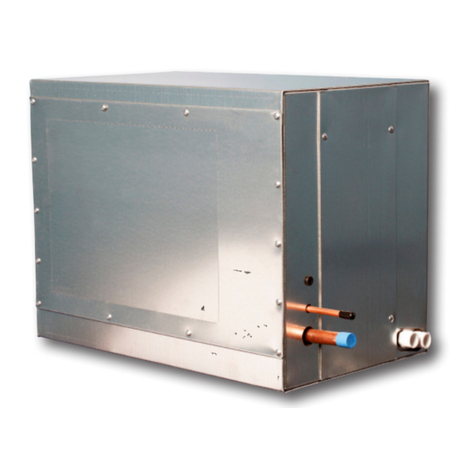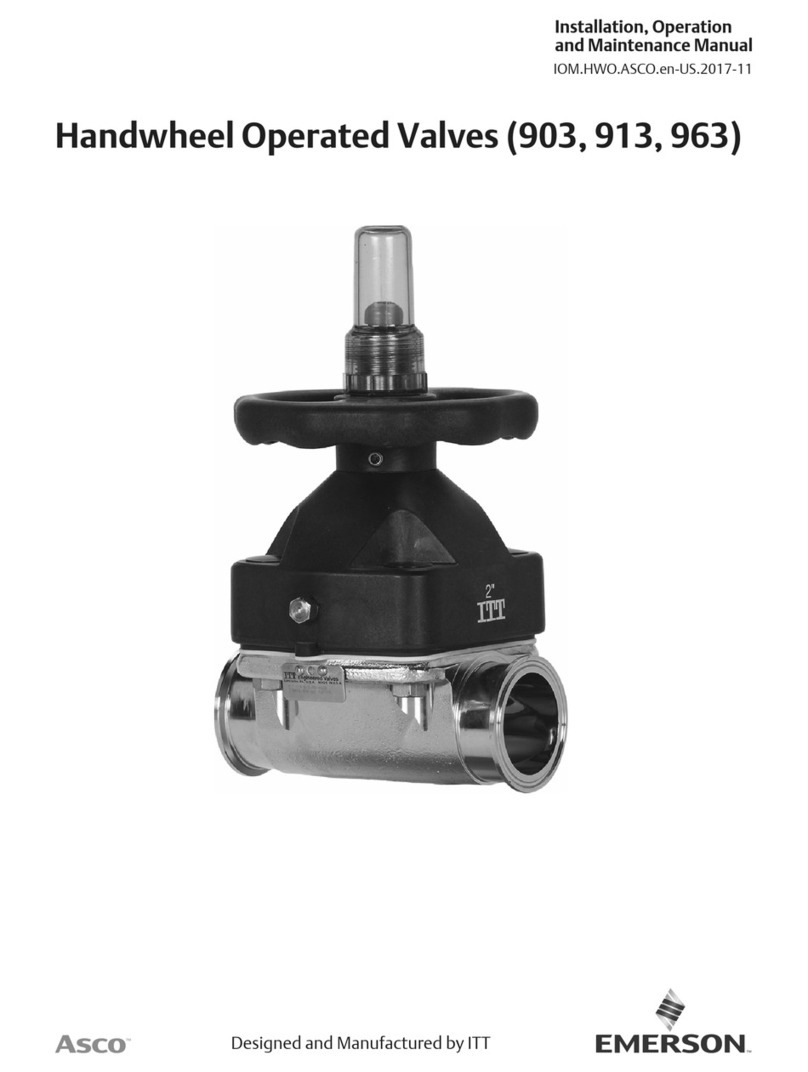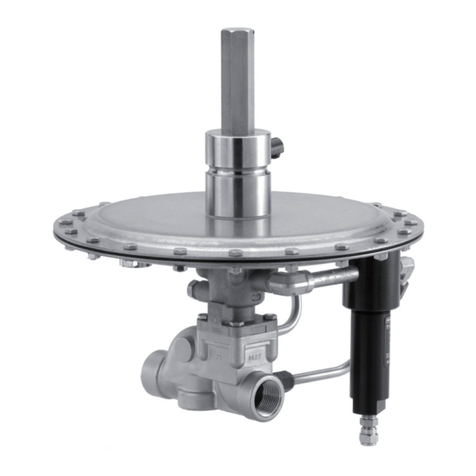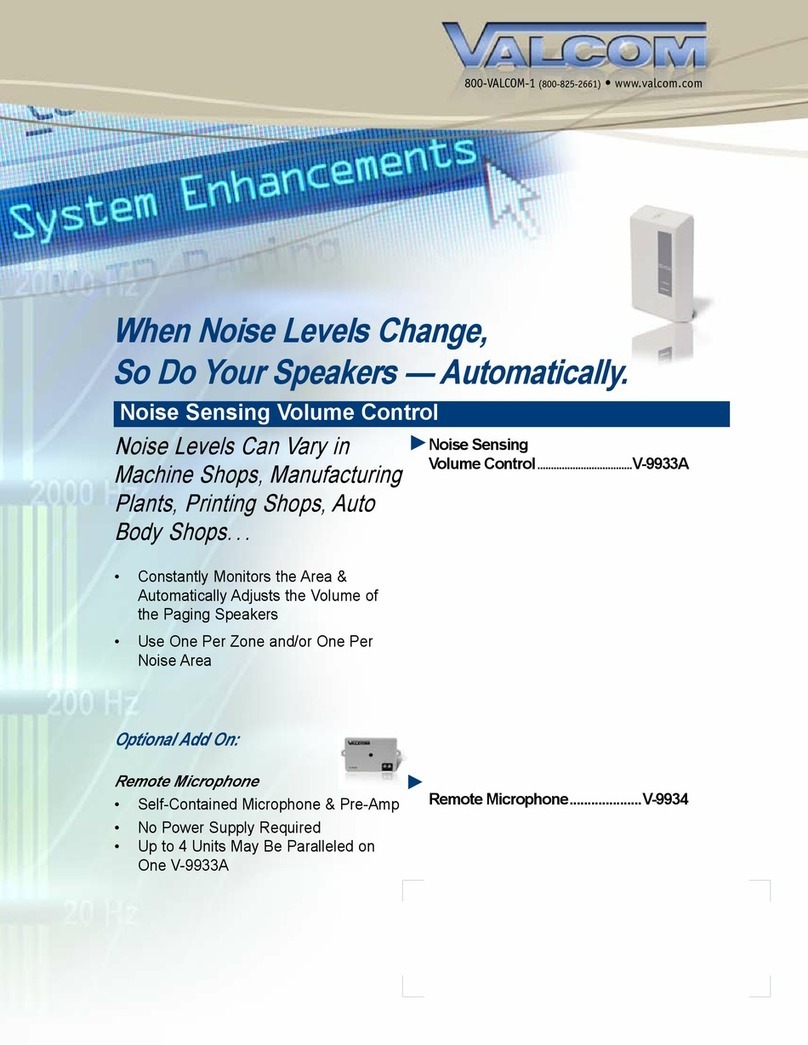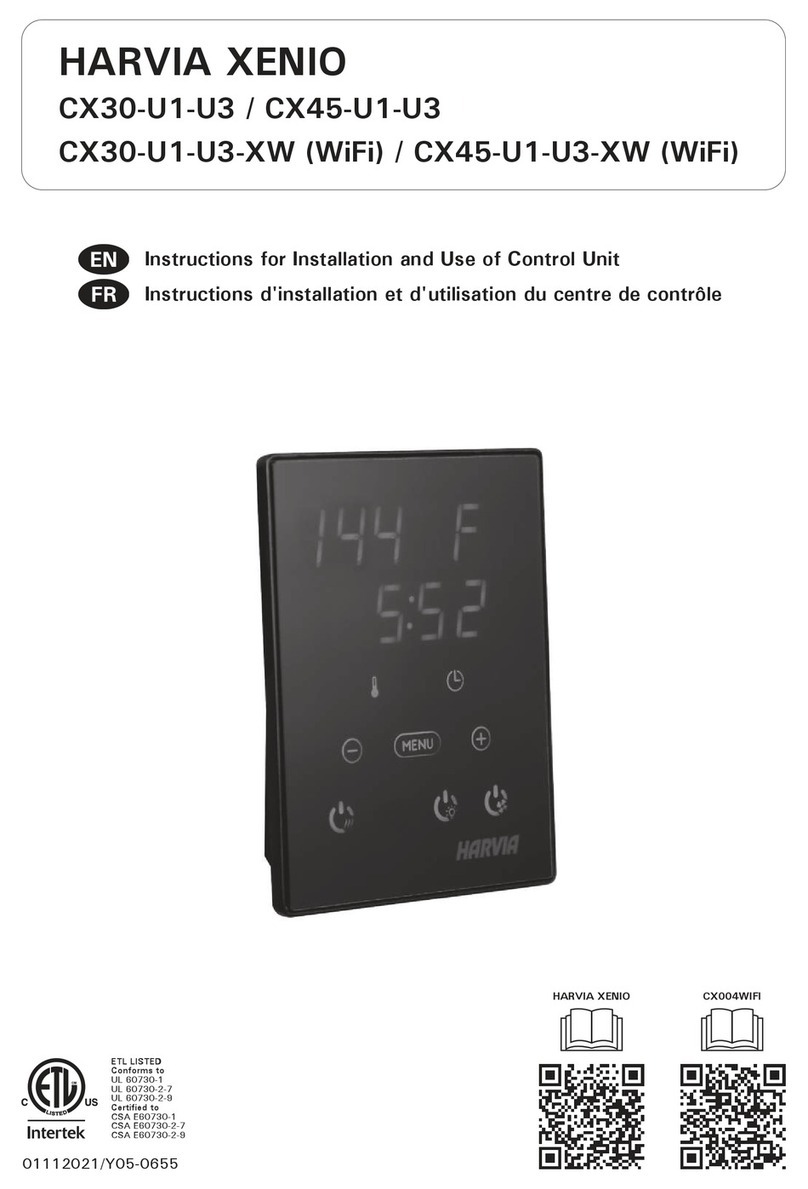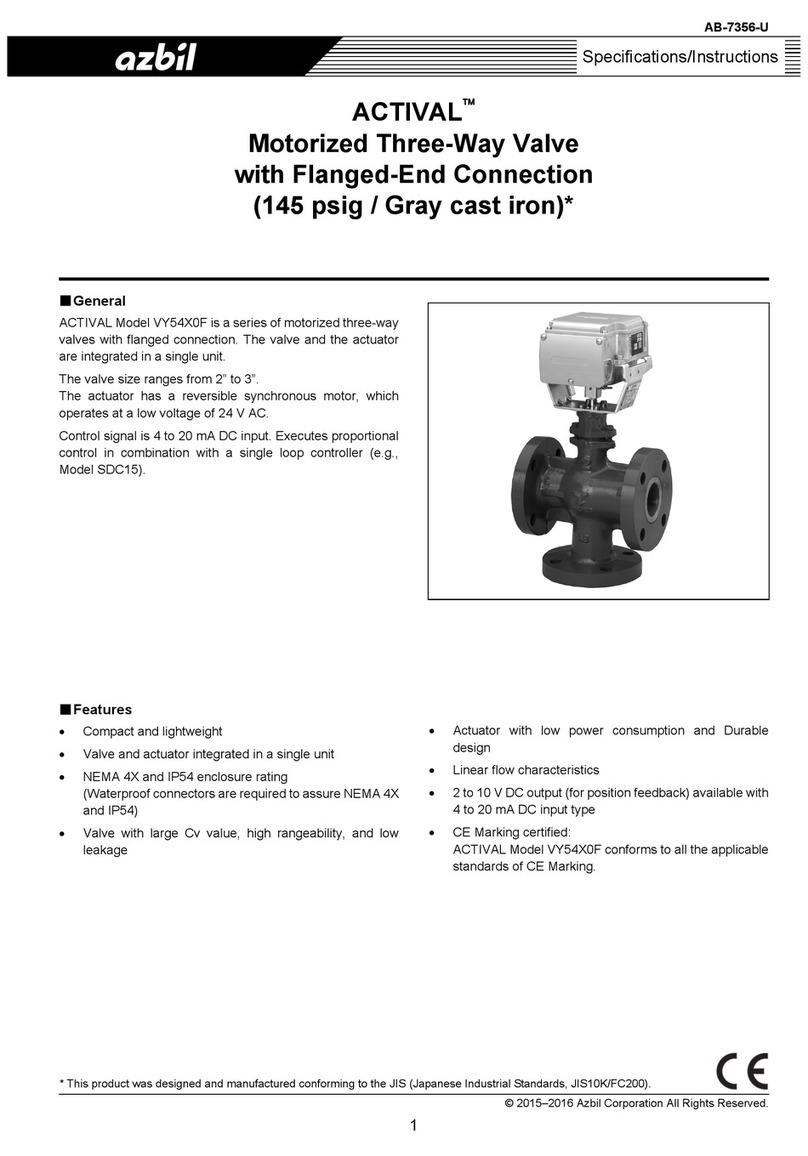Hi-Velocity RBM-50 User manual

Manufactured By
Module-RBM-Refrigerant-Base-Module-Installation-052020Module-RBM-Refrigerant-Base-Module-Installation-052020
RBM Refrigerant Base Module
Installation Manual
Small Duct High Velocity Heating, Cooling and Home Comfort Systems
RBM-50 (1.5-2 Tons)
RBM-70 (2.5-3 Tons)
RBM-100 (3.5-5 Tons)
Includes:
Pre-Piped TXV
Freeze Stat
Service/Access Ports
T-Mounting Brackets
Double Sided Mounting Tape
Hole Plugs (2)


www.hi-velocity.com
© 1995-2020 Energy Saving Products Ltd.© 1995-2020 Energy Saving Products Ltd.
Refrigerant Base Modules (RBM)
The RBM Series cooling coil comes as a module and can be
installed in the vertical or horizontal position on the return air
side of the fan coil. The RBM comes with T-mounting brackets,
thermal expansion valve, two access ports, and an external
freeze stat. This module comes heat pump ready and has most
components pre-piped. Only the two access ports and freeze
stat will need to be eld installed. Fig. 01 shows an installed coil
assembly and how each piece is connected.
1) Liquid line
2) High side access port
3) Adjustment stem cap
4) Superheat adjustment stem
5) Thermal expansion valve (TX)
6) Refrigerant distributor
7) Distributor tubes
8) Suction line
9) Anti-ice control (Freeze Stat)
10) Low side access port
11) TX capillary tube
12) TX sensing bulb
RBM modules can be used on any R-410A condenser if R-410A
refrigerant components are used. All Energy Saving Products
R-Series modules come standard with R-410A refrigerant
components.
-3--3-
The RBM module can be installed as a stand (return air base)
for the fan coil or as a side mounted coil. When the desired
air inlet side has been determined, the module can be adapted.
The module comes ready as left to up/right orientation (Fig. 02)
but can easily be changed to a right to up/left orientation. (Fig.
03) See page 3 for steps to adapt the coil to up/left.
The RBM Module can be installed in four dierent
congurations:
A- Entering air in through the left, leaving through the top.
B- Entering air in through the left, leaving through the right.
C - Entering air in through the right, leaving through the top.
D- Entering air in through the right, leaving through the left.
A
A or B
B
Fig. 02 - Up/Right Orientation
OR (WITH ADAPTATION)
C
C or D
D
Fig. 03 - Up/Left Orientation
1
9
8
7
6
5
4
32
10
11
12
Evaporator
Coil
Fig. 01 - Coil Assembly
Coil Conguration
Module RBM
RBM Refrigerant Base Module Installation

www.hi-velocity.com
© 1995-2020 Energy Saving Products Ltd.© 1995-2020 Energy Saving Products Ltd.
To change from up/right (standard) conguration to up/left conguration, follow the steps below.
Change Conguration
1) Remove front door
from module. (Fig. 04)
Fig. 04
2) Remove drain pan
by sliding it out from the
bottom. (Fig. 05)
Fig. 05
-4--4-
4) Rotate entire unit 90
deg. clockwise. (Fig. 07)
Fig. 07
6) Replace the drain
pan in (new) bottom
location. (Fig. 09)
Fig. 09
Fig. 06
3) Slide out the air
ow deector plate. (Fig.
06)
Fig. 08
5) Slide the air ow
deector plate back
into the section it was
removed from, in the new
orientation. (Fig. 08)
Fig. 10
7) Remove round
knock-outs on the door
to t drain lines. Plug
previously used drain
holes with provided plugs.
(Fig. 10)
Insert
Plugs
Remove
Knock-Outs
Fig. 11
Return Air
Knock-Out
8) Replace front door
on module. (Fig. 11)
Module RBM
RBM Refrigerant Base Module Installation

www.hi-velocity.com
© 1995-2020 Energy Saving Products Ltd.© 1995-2020 Energy Saving Products Ltd.
Mounting the cooling coil to the fan coil can be done with the T brackets supplied
(Fig. 12), ensure that no screws puncture the drain pan or coil. Use the provided double
sided tape to air seal the RBM to the fan coil.See specications page for the dimensions
of the fan coil units and cooling modules.
Once the RBM coil conguration and placement of the return air ducting has been decided, the return air knockout(s) can be cut.
The pre-measured guide cuts supplied with the RBM coil should always be used to make the rst cut. For this rst cut, do not use a saw
blade longer than 5” (125mm) or damage to the coil can occur.
Return Air Cutouts
Mounting Brackets
Fig. 12
TO AVOID DAMAGE: After the rst initial cut using the return air knockout(s) a
metal shear must be used to make the return air cutout opening match more closely
to the lter or return air ducting size to maximize ow capacity. Use this cut method
for both coil inlet and outlet.
Step 1: First cuts (using
pre-measured guide cuts)
can be made with a power
tool (no longer than a 5”
blade)
Step 2: Second cuts (to match
more closely to lter or R/A ducting
size) must be made with a metal
shear to avoid damage to the coil
Pre-Measured
Guide Cuts
-5--5-
Module RBM
RBM Refrigerant Base Module Installation

www.hi-velocity.com
© 1995-2020 Energy Saving Products Ltd.© 1995-2020 Energy Saving Products Ltd.
Thermal Expansion Valve & Sensing Bulb
The Thermal Expansion (TX) Valve comes pre-installed inside
the RBM Module. It is acccessible through the easy to remove
front door or access hatch. The access hatch is used to access
the TXV and the adjustment stem after the line sets are brazed
on, and can be adjusted while the system is running. The TXV’s
sensing bulb is pre-installed on a clean, horizontal section of the
suction line. It will be mounted on the top half of the pipe in
the 2 o’clock or 10 o’clock position. (Fig. 13) When brazing near
components always use a wet rag or heat dissipating paste to
avoid damage or overheating any compontents. Failure to do
so may void warranty.
Fig. 13 - TX Sensing Bulb
Access Ports
When refrigerant lines are connected to the RBM coil, high
and low side access ports must be connected as well. (Fig. 01 -
reference 2 & 10) With the use of a tee and reducer this process
is simplied. The access ports are required for system startup and
for future trouble shooting or service. When reading refrigerant
pressures/temperatures, always read them at the evaporator
access ports.
External Equalizer Line
The external equalizer line comes pre-installed o of the
TX Valve’s body and runs to the suction line. It is required to
compensate for refrigerant pressure drop through the coil.
Freeze Stat
The RBM Series cooling module comes with an
anti-freeze control. This freeze control serves the
purpose of preventing severe icing of the coil in the
event of an undercharge or low load on the coil.
During start-up, it is acceptable to jumper across the Freeze-
Stat. This will prevent the freeze-stat from shutting the system
o while charging a new system that may be low on refrigerant.
Once charged and running, this jumper must be removed and the
Freeze-Stat connected to the FZ and FZ terminals on the Printed
Circuit Board. Should wiring needs arise in which the outdoor unit
is controlled through another means of wiring, the Freeze-Stat
should be connected in series on the input side of the control
wiring.
Refrigerant Bypass
All RBM coils come with a pre-installed check valve ready TX
valve, used for AC only or heat pump condensing units. Third
party TX valves may require a bypass check valve.
Fig. 14- Bypass check valve
-6--6-
Freeze-Stat
Sensing
Bulb
10 o’clock 2 o’clock
12 o’clock
END
VIEW
Sensing
Bulb
Sensing
Bulb
Freeze-Stat
Important: Anti-freeze control must be
used at all times. Failure to do so may
void warranty.
Stand/Riser
Capped
Cleanout
P-Trap
Secondary
Drain
Primary
Drain
Fig. 15 - Example of Recommended Condensate Piping
Drain Connections, P - Trap &
Secondary Drain Pan
The primary condensate drain must have a minimum 3”
P-Trap installed (Fig. 15). The drain line must run at a slope of
¼” per foot in the direction of the drain. RBM modules come
with a ¾” male CPVC primary and secondary outlet. It is good
practice to install a clean out right above the P-Trap. Using a
“tee tting” and cap in the P-Trap’s construction can be used as
the clean out and as a way to prime the P-Trap if it ever dries out.
A wet P-Trap is important. A dry P-Trap can be detrimental to
proper drainage. If code requires a secondary drain line, run the
secondary line using the same method as primary. Otherwise,
capping o the secondary drain line is acceptable. Do not run the
secondary drain line to the secondary drain pan or use it as a vent
to atmosphere! An equipment stand/riser or rubber equipment
mat may be necessary to elevate the module o of the ground to
allow for a P-Trap.
Any installation that has the potential of property damage
due to condensate must have a secondary drain pan installed. If
the unit is installed in a high heat and/or high humidity location,
extra insulation around the unit casing may be required. This will
prevent excessive condensate from forming on the outer surface
of the casing.
Important: Piping the condensate lines on a return side cooling
coil can be dramatically dierent, be sure to read info below.
Module RBM
RBM Refrigerant Base Module Installation

www.hi-velocity.com
© 1995-2020 Energy Saving Products Ltd.© 1995-2020 Energy Saving Products Ltd.
Piping the RBM
Only refrigerant grade pipe and ttings are to be used with
the RBM Module. Plumbing ttings may contain wax or other
contaminants which are detrimental to the proper operation of
the system. Insulate the suction line with a minumum of 3/8”
insulation. In high heat areas, a minimum of 1/2” insulation may
be needed. If the lines are run in an area where temperatures
could exceed 120°F or runs longer than 50’, then the liquid line
may need to be insulated as well. Support the pipe every 5 feet,
or whatever local code states.
Run the pipes in the most direct route possible, taking into
account structural integrity, building details and local building
codes. If the evaporator is located above the condenser, slope
any horizontal runs toward the condenser. If the condenser is
located above the evaporator, a P-trap must be installed at the
bottom of the vertical riser. For long vertical risers, additional
P-traps must be installed for every twenty feet. For lines running
over 50’, a suction line accumulator must be installed. Lines
running over 100’ are not recommended.
Pipe Sizing
Tables 01 and 02 contain line sizing information for the liquid
and suction lines.
The sizes given in the above tables are only for general reference, if the
condenser manufacture requires a dierent size than specied in Table 01
and Table 02, their sizing shall be used whenever a discrepancy occurs.
Table 01 – Liquid Line sizes
Tons
Distance 1 11⁄22 21⁄23 31⁄24 5
1’–25’ 1⁄41⁄45⁄16 3⁄83⁄83⁄83⁄81⁄2
26’–50’ 5⁄16 5⁄16 3⁄83⁄81⁄21⁄21⁄21⁄2
51’–75’ 3⁄83⁄83⁄81⁄21⁄21⁄21⁄21⁄2
76’–100’ 3⁄83⁄81⁄21⁄21⁄21⁄21⁄21⁄2
Table 02 – Suction Line sizes
Tons
Distance 1 11⁄22 21⁄23 31⁄24 5
1’–25’ 5⁄85⁄83⁄43⁄43⁄47⁄87⁄81
26’–50’ 5⁄83⁄43⁄43⁄47⁄87⁄811⁄811⁄8
51’–75’ 3⁄43⁄47⁄87⁄811⁄811⁄811⁄811⁄8
76’–100’ 3⁄47⁄87⁄811⁄811⁄811⁄811⁄811⁄8
Outdoor Unit Installation
Locate the outdoor unit in a suitable location, as close as
possible to the fan coil. Maintain the clearances recommended
by the manufacturers of the outdoor unit, to ensure proper
airow. The outdoor unit must be installed level, in a properly
supported location. A liquid line lter/drier is recommended to
be installed.
Wiring – Outdoor Unit
Make all connections to the outdoor unit with rain tight
conduit and ttings. Most building codes require a rain tight
disconnect switch at the outdoor unit as well (always check
local codes). Run the proper size copper wires to the unit, and
connect as per the manufacturer’s recommendations.
Ensure that the unit is setup for a TX system. If not, a hard
start kit may be required.
Evacuating
The system must be brazed under a nitrogen purge to
prevent oxidation of the pipe during the brazing process. After
the piping is installed and all components have been brazed
together, a vacuum pump must be used to properly evacuate
the system from both of the access ports to 1500 microns, to
ensure system is free of contaminants. Add refrigerant to the
system to bring the pressure above zero psig. After allowing
the refrigerant to absorb moisture, repeat the above procedure.
Evacuate the system to 500 microns on the second evacuation,
and ensure that the system holds at the vacuum pressure. If not,
check for leaks and evacuate again. If the vacuum holds, add
refrigerant to raise the pressure to 2 psig. At this point open
service valves on pre-charged condensing units.
The use of an electronic leak detector is recommended, as it is
more sensitive to small leaks under the low pressures.
Once the system has been determined clean and ready for
charging, refrigerant can be added. The service valves on the
condenser must be open at this point. Never leave the system
unattended when charging. With the system running, slowly
add refrigerant. The typical operating point of an RBM coil is
that of a saturated suction temperature of 34-40°F at 100-115
psig (1-4°C at 7-8 bar) and a suction line temperature of 38-
44°F at 114-128 psig (3-7°C at 8-9 bar). In order to prevent
overcharging during this stage, refrigerant should be added in
steps. This will allow time for the system to settle and prevent
‘overshooting’ the ideal charge. Condenser pressures and
temperatures remain similar to those in a conventional forced
air system. It is recommended that the coil be charged on a
high load day at the compressor’s highest speed.
Charging
Most system start ups require only an adjustment to the
refrigerant level of the system. Should further renement
be required, the TXV may be adjusted. A clockwise turn of
the superheat adjustment stem (the direction in which the
cap is screwed on) will result in a closing of the valve while a
counterclockwise turn (the direction in which the cap was
unscrewed) will result in opening of the valve. Always note
system conditions before adjusting the valve and allow 5 minutes
for the system to settle before making any further adjustments.
Never adjust the TXV more than one quarter turn at a time.
-7--7-
Important: Failure to follow the proper
evacuating and charging procedures may
void warranty.
Module RBM
RBM Refrigerant Base Module Installation

www.hi-velocity.com
© 1995-2020 Energy Saving Products Ltd.© 1995-2020 Energy Saving Products Ltd.
Heat Pumps
Traditionally, SDHV systems have been charged to special
guidelines when used in conjunction with heat pumps. This
charging procedure involved charging the units to normal
cooling capacities and reviewing the operation in heating mode.
If head pressures were found to be impinging on the high head
pressure limits, a small amount of refrigerant was removed to
prevent the unit from shutting down. The cause of high head
pressures in heating mode is due to the disparity in sizes of the
indoor and outdoor coils, along with the lower airow rates of
SDHV systems.
The RBM coil can operate at a level that is dierent from
most other conventional system coils. Typically, superheat levels
are slightly lower at 6-10°F (1 - 3°C) of superheat. Adjustment
of the valve also diers somewhat. Rather than having a large
eect on the range of superheat, adjustment of the valve has
a larger eect on the system pressures; superheat maintaining
a fairly constant point. Opening the valve will increase suction
pressures and decrease liquid pressures, while closing the valve
will decrease suction pressures and raise liquid pressures.
Bi-Flow Receiver
The Bi-Flow Receiver is designed
for use with heat pump systems,
up to 5 tons, and with any typical
refrigerants. The receiver provides
a location for the storage of excess
refrigerant during the heating cycle,
minimizing head pressures. During
cooling mode, the receiver is empty,
allowing the full refrigerant charge to
be utilized for cooling.
The receiver is a horizontal tank with a pair of dip tubes
extending to the bottom of the tank. These two tubes allow for
liquid refrigerant to be drawn from the tank regardless of the
direction of ow. For this reason, the receiver must be mounted
so that the inlet/outlets of the tank come out of the top of the
unit. Mounting brackets are located at the base of the unit for
secure mounting. The receiver is to be located on the liquid line
of the system, anywhere between the indoor and outdoor coils.
As the unit is of a bi-ow design, it does not matter which end
faces towards the indoor coil.
The inlet/outlet ports are constructed of steel and require
the use of a 35-45% Silver Solder and Flux for brazing. The use
of standard copper to copper solders may result in diculty
brazing and the potential for a failure at the weld. Ensure
that the tank is protected from overheating while brazing and
that any remaining ux is cleaned from the unit. If installing
outdoors, ensure that the receiver is insulated and protected
from the elements.
With the introduction of newer, larger heat pumps, this issue
is more likely to be experienced. While some heat pump units
may still be charged in the traditional method, the amount of
refrigerant that is required to be removed for heating mode may
leave the system drastically undercharged for cooling mode. For
this reason it is highly recommended that a Bi-Flow Receiver be
used with heat pump applications.
Charging (Continued)
Typical Operating Ranges
Saturated Suction Temperature 34 - 40°F (1 - 4°C)
Suction Line Temperature 38 - 44°F (3 - 7°C)
Superheat 6 - 10°F (1 - 3°C)
Suction Line Pressure (R-410A) 110-124 psig (7.5-8.5 bar)
Liquid Line Pressure (R-410A) 250-300 psig (17-20.5 bar)
Return Air
When designing the return air for a Hi-Velocity System, there
are a few things to consider. It is common to use centralized
return air with systems that have rooms that are within a
common area. Separate oors or rooms that have high loads
and require a large amount of supply air ow should have their
own return air, or be tied into the centralized return air to allow
the air to return back to the fan coil. Rooms or areas that cannot
be tied into the return air should have an air transfer grill to
allow the air to escape the room and ow back to a centralized
return air.
-8--8-
Important: Return Air must be ltered
before entering the cooling module.
Module RBM
RBM Refrigerant Base Module Installation

www.hi-velocity.com
© 1995-2020 Energy Saving Products Ltd.© 1995-2020 Energy Saving Products Ltd.
The Return Air is to be sized on a 0.15 static pressure (37 pa) as
compared to 0.10 static pressure (25 pa) for conventional forced
air systems. The maximum length for an individual return air duct
is fty feet (15.24m).
Duct Sizing
Please note: It is VERY important NOT
to undersize the return air, as this will
create noise, increase motor power
consumption, reduce airow and increase
the possibility of condensate carry-over.
Table 03 has recommended return air sizes for round and
rectangular ducts. A variance of +20% is allowable for sizing
return ducts that connect to the RBM or Hi-Velocity Systems unit.
Where allowed by local codes, a single return air grill may be
used. Note: Return air grill must have equal minimum of free air
area to return air.
Table 03 – Return Air Duct Sizes
Unit Rigid Ø Flex Ø
Min Sq.
Inches
(Sq. cm)
50/51/52 12”
(305mm)
14”
(356mm)
120
(774cm)
70/71 12”
(305mm)
14”
(356mm)
120
(774cm)
100/101 14”
(356mm)
16”
(406mm)
168
(1084cm)
Remember: When using exible duct for return air, use
one duct size larger due to the higher friction loss.
Important: When connecting a round
Return Air to the RBM coil, a round to
rectangular transition is required.
Specications RBM-50 RBM-70 RBM-100
Matching Fan Coil
HE-Z/HE-B/HE-50/51
HV-50/51/52
CU-51
LV-50
HE-Z/HE-B/HE/HV-70/71
LV-70 HE-Z/HE-P/HE-B/HE/HV-100/101
Part Number 41090300050 41090300070 41090300100
Tons(1) 1.5 - 2.0 (5.3 - 7.0 kW) 2.5 - 3.0 (8.8 - 10.6 kW) 3.5 - 5.0 (12.3 - 17.6 kW)
Refrigerant Type R-410A R-410A R-410A
TX Cooling MBH(2) 18-24 (5.3-7.0 kW) 30-36 (8.8-10.6 kW) 42-60 (12.3-17.6 kW)
Latent Cooling MBH 6.8-8.9 (2.0-2.6 kW) 11.7-13.7 (3.4-4.0 kW) 16.0-22.2 (4.7-6.5 kW)
Fin Material Aluminum Aluminum Aluminum
Tubing Material Copper Copper Copper
Type of Fins .006 Al (0.1524mm) .006 Al (0.1524mm) .006 Al (0.1524mm)
Connection
Sizes
Liquid Line (Lq) 3/8”(9.5mm) 3/8”(9.5mm) 3/8”(9.5mm)
Suction Line (S) 7/8”(22.3mm) 7/8”(22.3mm) 7/8”(22.3mm)
Drain Connection 3/4”M CPVC (19mm) 3/4”M CPVC (19mm) 3/4”M CPVC (19mm)
TXV with Built in Check Valve & Bypass Pre-Installed Pre-Installed Pre-Installed
Access Ports Yes Yes Yes
Freeze Stat Yes Yes Yes
Shipping Weight 35 lbs (15.9 kg) 45 lbs (20.4 kg) 55 lbs (24.9 kg)
Module Size (L x W x H) 14 1⁄2” x 18 1⁄4” x 18 1⁄4”
(368mm x 464mm x 464mm)
19 1⁄2” x 18 1⁄4” x 18 1⁄4”
(495mm x 464mm x 464mm)
25 1⁄2” x 18 1⁄4” x 18 1⁄4”
(648mm x 464mm x 464mm)
-9--9-
Important: When using exible duct for
return air, use one duct size larger due to
the higher friction loss.
Module RBM
RBM Refrigerant Base Module Installation
(2) Smaller condensers may be matched to the fan coil when needed (match TXV to condenser size)
(1) Minimum ofMinimum of four HE outletsfour HE outlets per ton of cooling needed. (2” Duct = Minimumper ton of cooling needed. (2” Duct = Minimum eight outletseight outlets per ton)per ton) MBH - Thousand British Thermal Units per Hour
TX - Thermal Expansion
TXV - Thermal Expansion Valve

www.hi-velocity.com
© 1995-2020 Energy Saving Products Ltd.© 1995-2020 Energy Saving Products Ltd.
Item Length Width Height Liquid Line Suction Line Drain Conn.
Refrigerant Modules B C A D E F
RBM-50 14 1⁄2”(368mm) 18 1⁄4”(464mm) 18 1⁄4”(464mm) 3/8” o.d. 7/8” o.d. 3/4” M CPVC
RBM-70 19 1⁄2”(495mm) 18 1⁄4”(464mm) 18 1⁄4”(464mm) 3/8” o.d. 7/8” o.d. 3/4” M CPVC
RBM-100 25 1⁄2”(648mm) 18 1⁄4”(464mm) 18 1⁄4”(464mm) 3/8” o.d. 7/8” o.d. 3/4” M CPVC
RBM Series Sizing
A
B
C
D
E
F
-10--10-
Module RBM
RBM Refrigerant Base Module Installation

www.hi-velocity.com
© 1995-2020 Energy Saving Products Ltd.© 1995-2020 Energy Saving Products Ltd.
-11--11-
Module RBM
RBM Refrigerant Base Module Installation
• Inoperative parts must be returned to Energy Saving Products Ltd. with an ESP RMA Form that
includes model, serial number, and a detailed description of the entire problem. Inoperative parts
must be returned in testable condition.
• This warranty does not cover shipping costs to and from the factory, labor costs or any other cost
associated with the installation of the replacement part.
• Energy Saving Products Ltd. is not liable for any other damages, personal injury, or any other losses
of any nature.
• The liability of Energy Saving Products Ltd. is limited to and shall not exceed the cost of pre-approved
replacement parts.
WARRANTY
AThree (3) Year Limited Warranty is extended on Electric Strip Heaters.
A Five (5) Year Limited Warranty is extended on all components in products manufactured exclusively
by Energy Saving Products. These components include Motors, WEG Controller, Circuit Boards, Dampers,
Zoning Controls, Blowers, Motor & Blower Assemblies, Heating Coils, Chilled Water Coils, and Air
Conditioning Coils. Note: If any product is installed in or exposed to a corrosive environment, warranty
will be void.
Energy Saving Products Ltd. is proud to oer a limited warranty. This warranty applies strictly to the rst
purchaser at wholesale level and only to the fan coil unit and module. It does not include connections, attachments
and other products or materials furnished by the installer.
TERMS & CONDITIONS
• Any repair performed under warranty must be approved by Energy Saving Products Ltd. for this
warranty to be valid.
This warranty replaces all other warranties expressed or implied.
www.hi-velocity.com
• Should there be multiple consecutive failures of a single part, warranty will not be considered unless
a contractor has contacted Energy Saving Products Ltd. Technical Department for assistance, and
received a tech code.
Follow these steps for Service or Repair:
1. Contact the installer of the product or a licensed service company
2. Contact the distributor
3. Contact Energy Saving Products Ltd. Mon-Fri 8 am – 4:30 pm MT 1-888-652-2219
This warranty excludes any damages caused by changes, relocation to, or installation in a new site. This warranty
does not cover any defects caused by failure to follow the installation and operating instructions furnished with
the fan coil. This warranty does not cover defects caused by failing to adhere to local building codes and following
good industry standards. Failure to correctly install the fan coil, or material related to the unit, may result in
improper system performance and/or damages and will void this warranty. This warranty does not cover material
installed in or exposed to a corrosive environment. This warranty does not cover products subjected to abnormal
use, misuse, improper maintenance, or alteration of the product. Using the fan coil and/or module as a source of
temporary heating/cooling during construction will void this warranty.
Products sold by Energy Saving Products but manufactured by others, will carry the original
manufacturer’s warranty.

TM
Energy Saving Products Ltd, established in 1983, manufactures the Hi-Velocity
SystemsTM product line for residential, commercial and multi-family markets. Our facilities
house Administration, Sales, Design, Manufacturing, as well as Research & Development
complete with an in-house test lab. Energy Saving Products prides itself on Customer
Service and provides design services and contractor support.
For all of your Heating, Cooling and Indoor Air Quality needs, the Hi-Velocity System
is the right choice for you!
Phone: 780-453-2093
Fax: 780-453-1932
Toll Free: 1-888-652-2219
www.hi–velocity.com
Hi-Velocity HE-Z Fan Coils,Hi-Velocity HE-Z Fan Coils, GreenGreen TechnologyTechnology
Build Smart, BreatheBuild Smart, Breathe EasyEasy
Small Duct Heating, Cooling and IAQ Systems
This manual suits for next models
2
Table of contents
Other Hi-Velocity Control Unit manuals
Popular Control Unit manuals by other brands
Freescale Semiconductor
Freescale Semiconductor Kinetis TWR-K24F120M quick start guide

Huawei
Huawei MU709s-2 Hardware guide
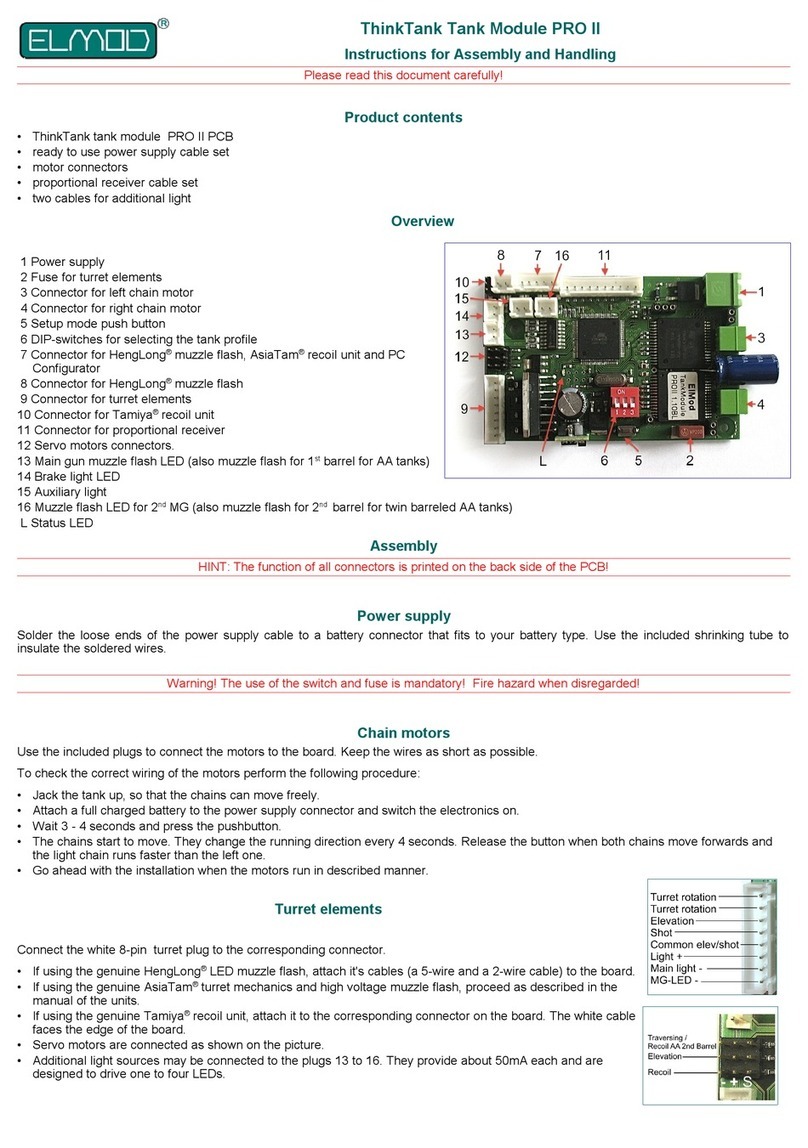
ElMod
ElMod ThinkTank Tank Module PRO II Instructions for Assembly and Handling
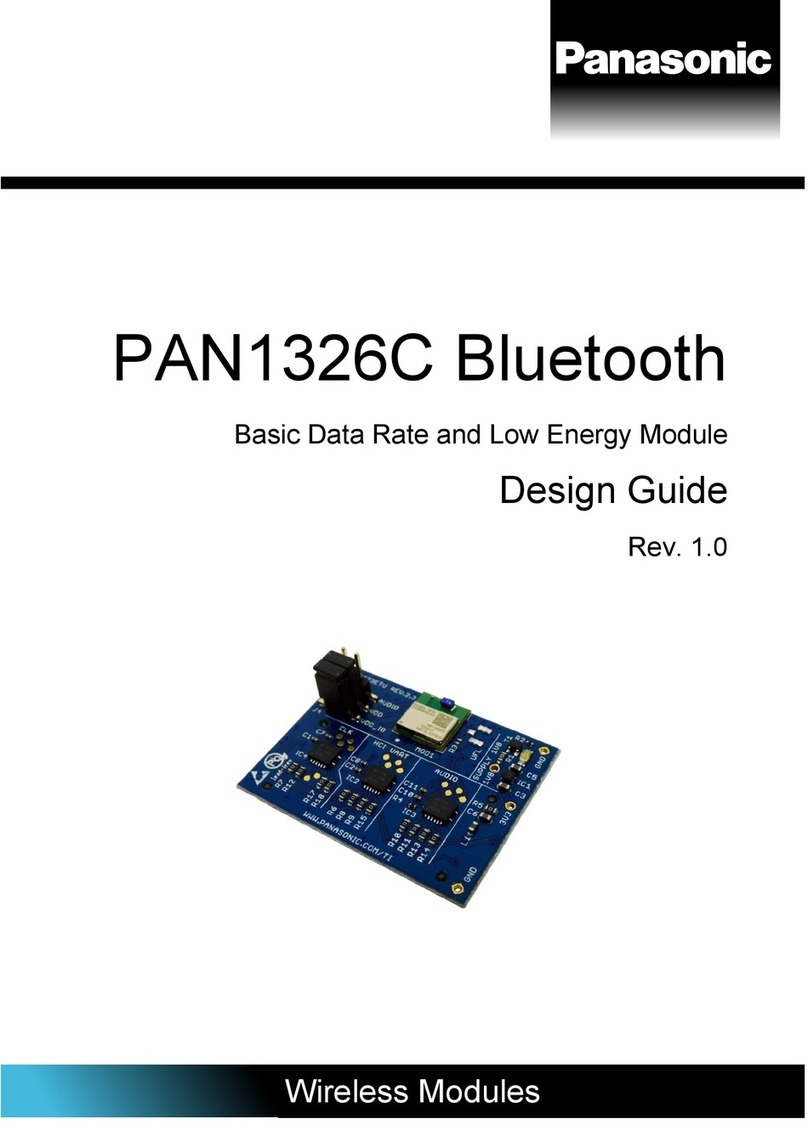
Panasonic
Panasonic PAN1326C Design guide
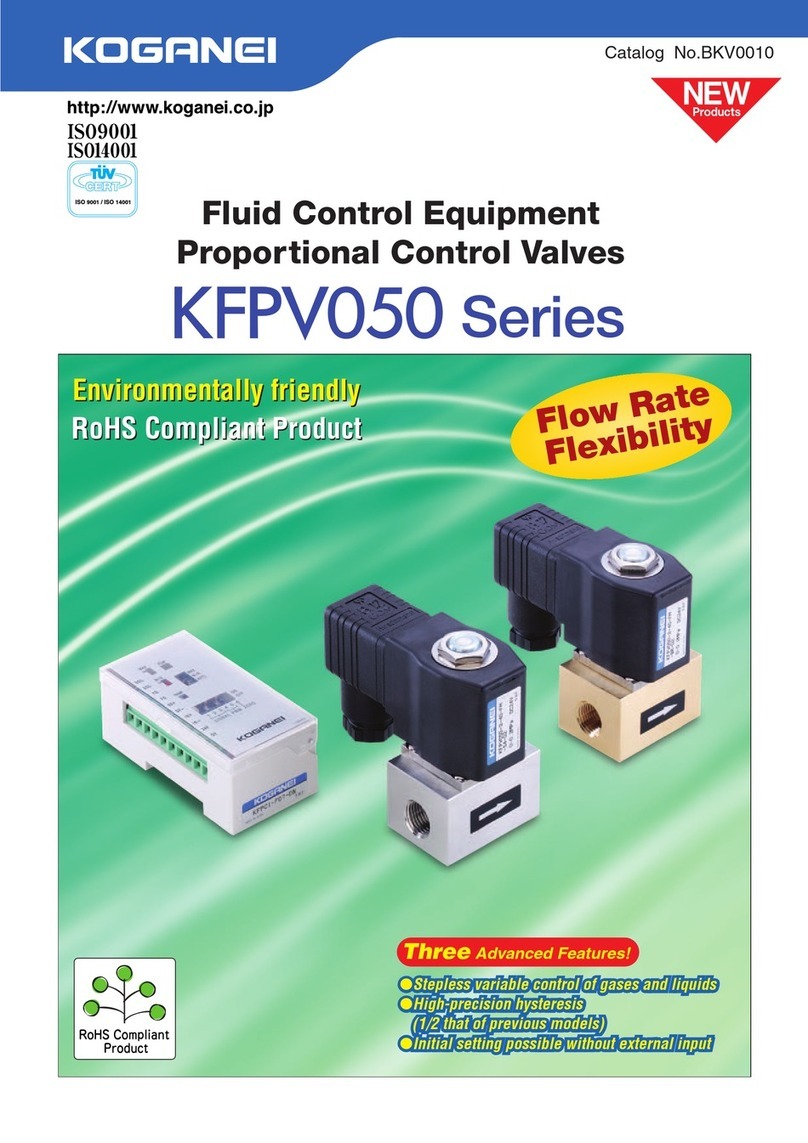
Koganei
Koganei KFPV050 Series manual
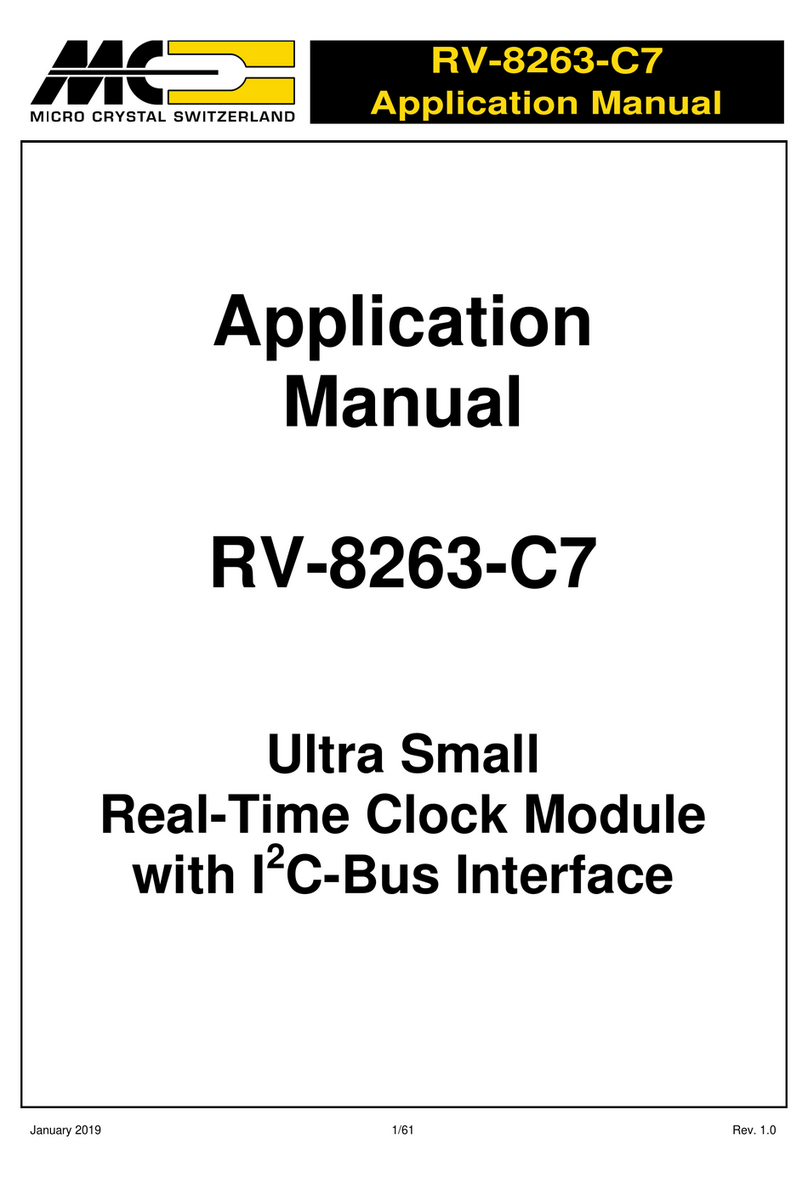
Micro crystal
Micro crystal RV-8263-C7 Applications manual
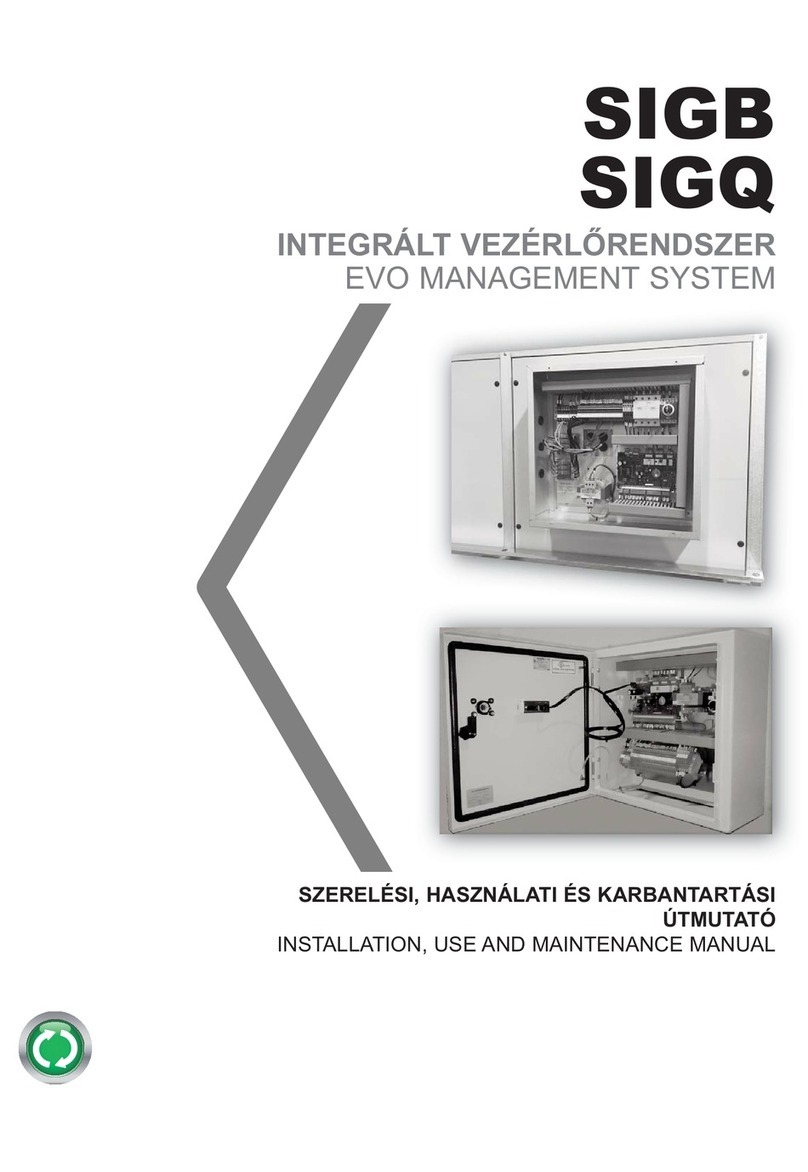
Solaronics
Solaronics SIGB Installation, use & maintenance manual
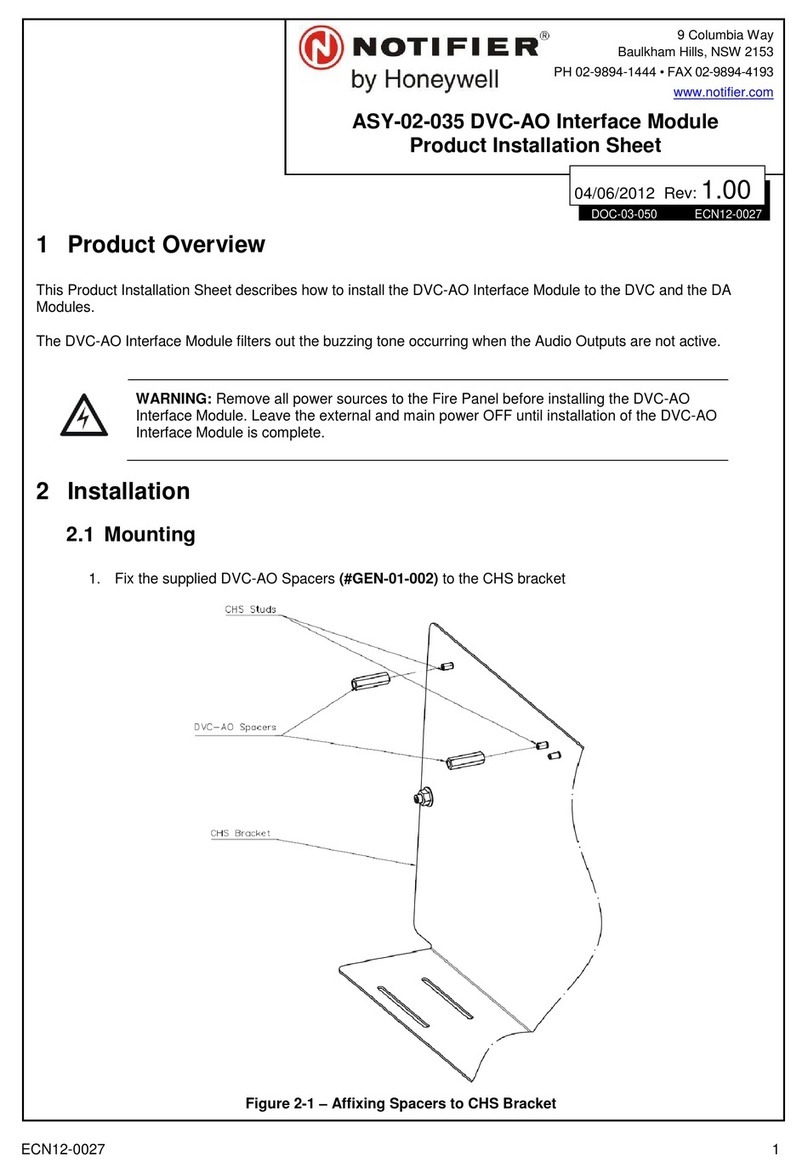
Honeywell
Honeywell Notifier DVC-AO Product installation sheet
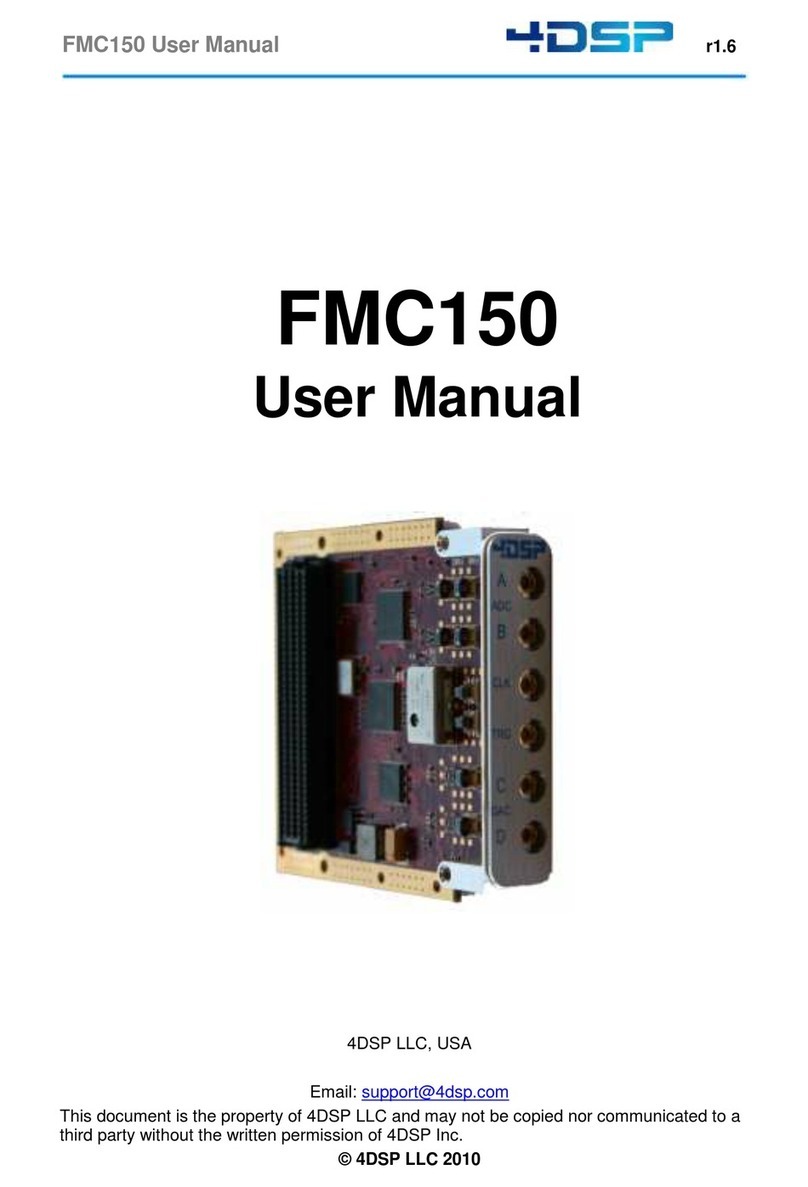
4DSP
4DSP FMC150 user manual
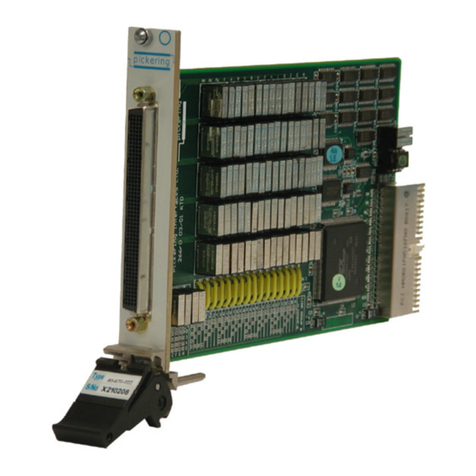
Pickering
Pickering 40-670 user manual
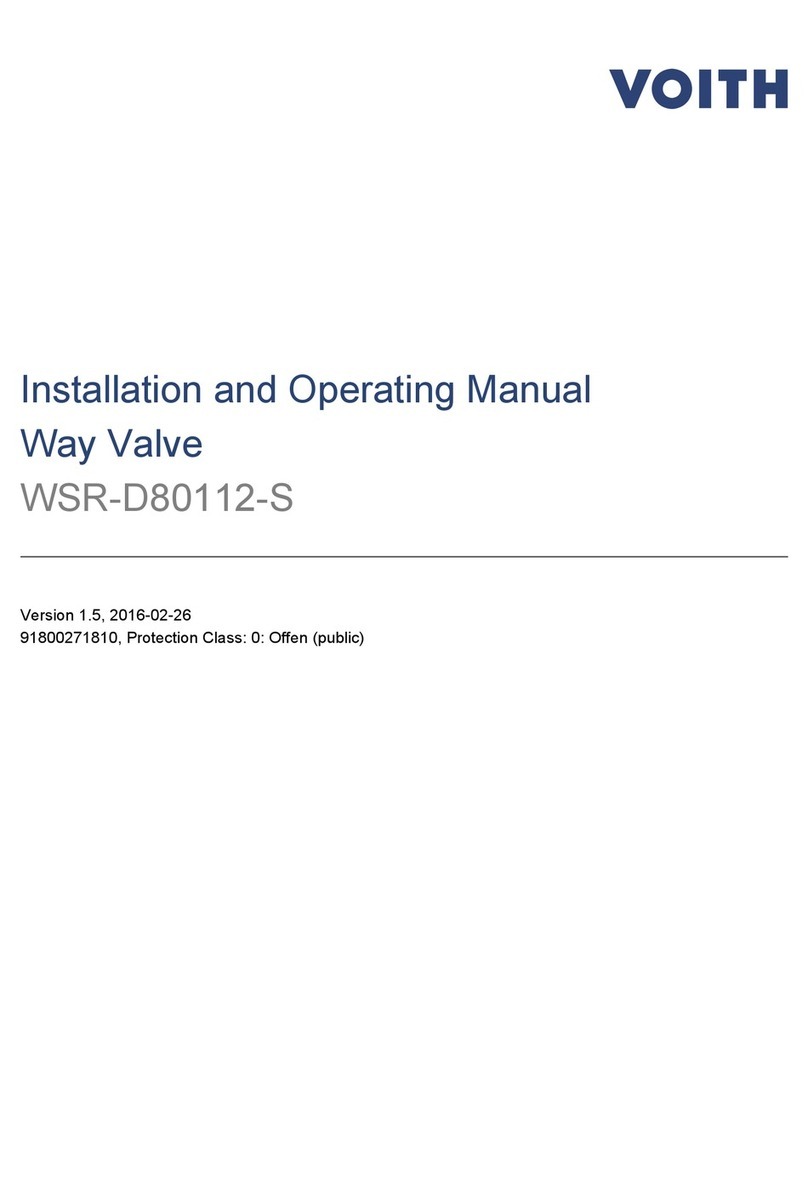
Voith
Voith WSR-D80112-S Installation and operating manual
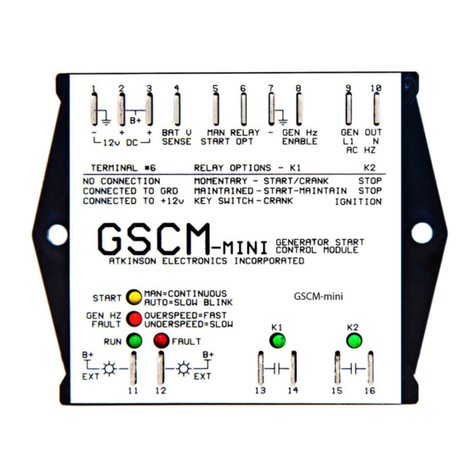
Atkinson Electronics
Atkinson Electronics GSCM-mini-P manual
